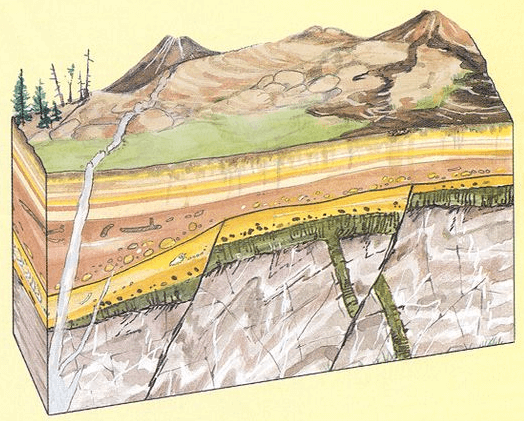Mine Shaft Sinking Methods
Conventional mine shaft sinking methods involve the performance of a cycle of different operations—drilling and blasting, removal of smoke and cleaning of fly-rock lodged on overhead timbers, mucking and hoisting of the broken rock, and timbering. The latter (a) may be the last operation of the cycle, (b) may be carried on during drilling and […]
Mine Shaft Sinking Costs
Costs of sinking a mine shaft vary with the size and depth of the shaft; nature of the rock (the ease with which it can be drilled and broken, and the nature and amount of support required); amount of water that must be handled, speed of sinking, organization of the work, and the equipment employed; […]
Mine Shaft Sinking Equipment
The technical literature is replete with descriptions of and data on shaft sinking equipment, methods and costs. The subject of shaft sinking has been discussed at some length in an earlier Bureau of Mines bulletin. A number of shaft-sinking operations are described in detail in the series of information circulars on mining methods and costs, […]
Driving an Underground Mine Adit: Methods & Equipment
Although practices in vogue for many years are still employed in small-scale operations, decided advances have been made, particularly in the last decade and especially in connection with large-scale operations. Contributing to this are introduction of mechanical loading equipment, mechanical ventilation, availability of cheap power, improved rock-drilling equipment, use of drill carriages and tenders in […]
How to Select a Mine Entrance Location
The main opening is usually a permanent one that will be utilized throughout the life of the mine. It should, therefore, be so situated relative to the ore bodies that it will not be disturbed by ground movement caused by ore extraction and with a view to low maintenance cost. It is advantageous, other things […]
Ore Reserve Estimation Method

Estimates of the tonnage and average grade of ore deposits (ore-reserve estimates) are made for various purposes. They may be made by examining engineers as a basis for placing a value on a mining property in connection with reports on behalf of owners or vendors, on the one hand, or for prospective purchasers or lessees, […]
Tunnel Construction Cost
The Rawley property is located in the Kerber Creek mining-district, Saguache county, Colorado, at an elevation of 10,600 ft. (See sketch-map, Fig. 1.) Ore was found in this vicinity, and claims covering a large area were located and in many instances patented. The ores, however, being of comparatively low grade, and the nearest railway station, […]
Sampling Ore from Hammer Drills
The use of hammer drills for obtaining samples in underground work has increased in recent years. This method has advantages where holes are short, ground conditions preclude the use of diamond drills, satisfactory core recovery is impossible, or sludge samples are accurate enough for the purpose in view. Holes may be drilled at all angles […]
Drill Core Sampling
The advantages of obtaining core samples that provide a visual record of the rocks and ores sampled and at the same time furnish samples for assay have been pointed out under the caption Exploration by Drilling. The diamond drill, which employs either carbons or bort as cutting media, has been the type of core drill […]
Ore “Rock” Face Sampling
Face sampling is the cutting of pieces of ore and rock from exposed faces of ore and waste. The faces may be natural outcrops or faces exposed in surface trenches and pits or in the backs, walls, and floors of development openings and stopes. Face samples may be taken: by cutting grooves or channels of […]
